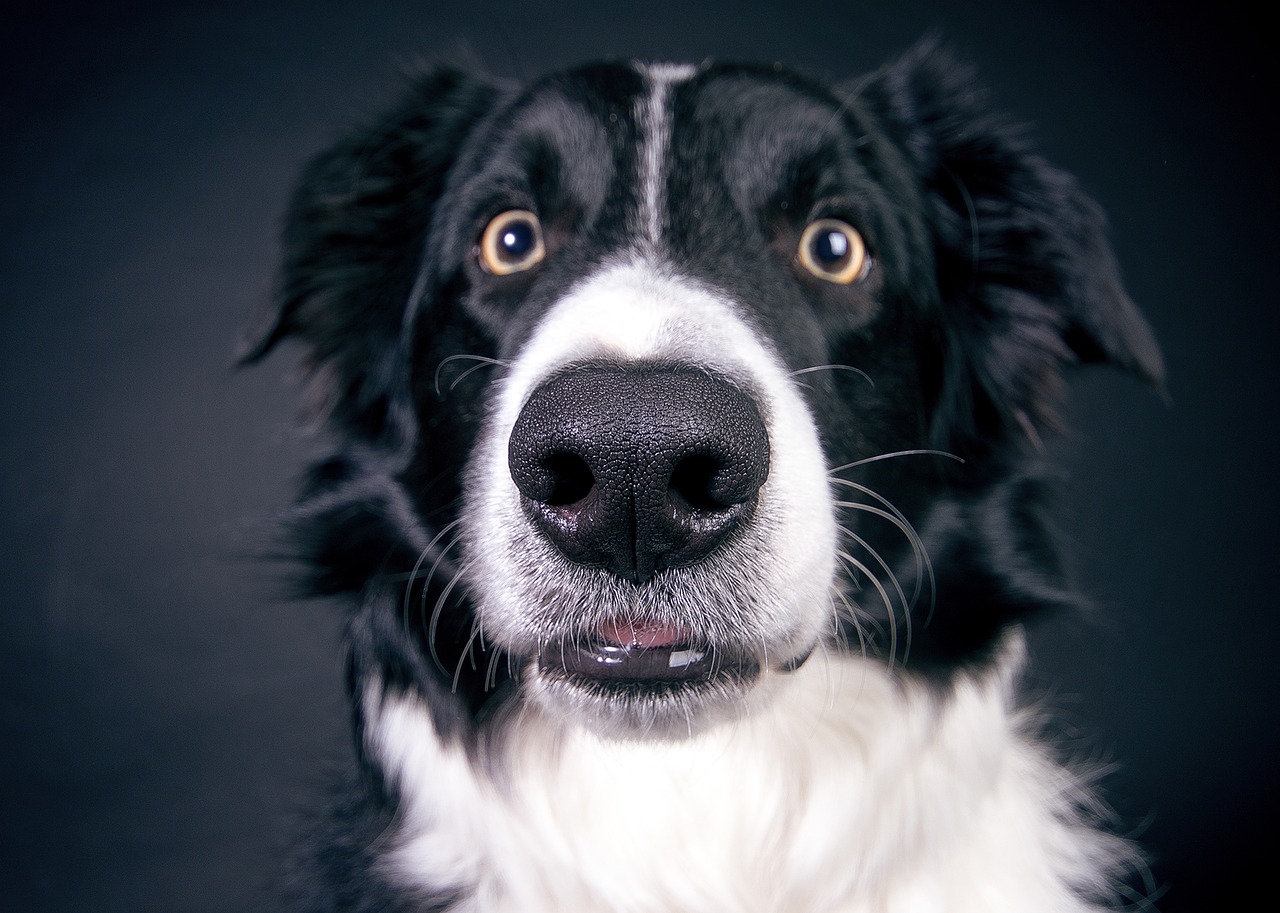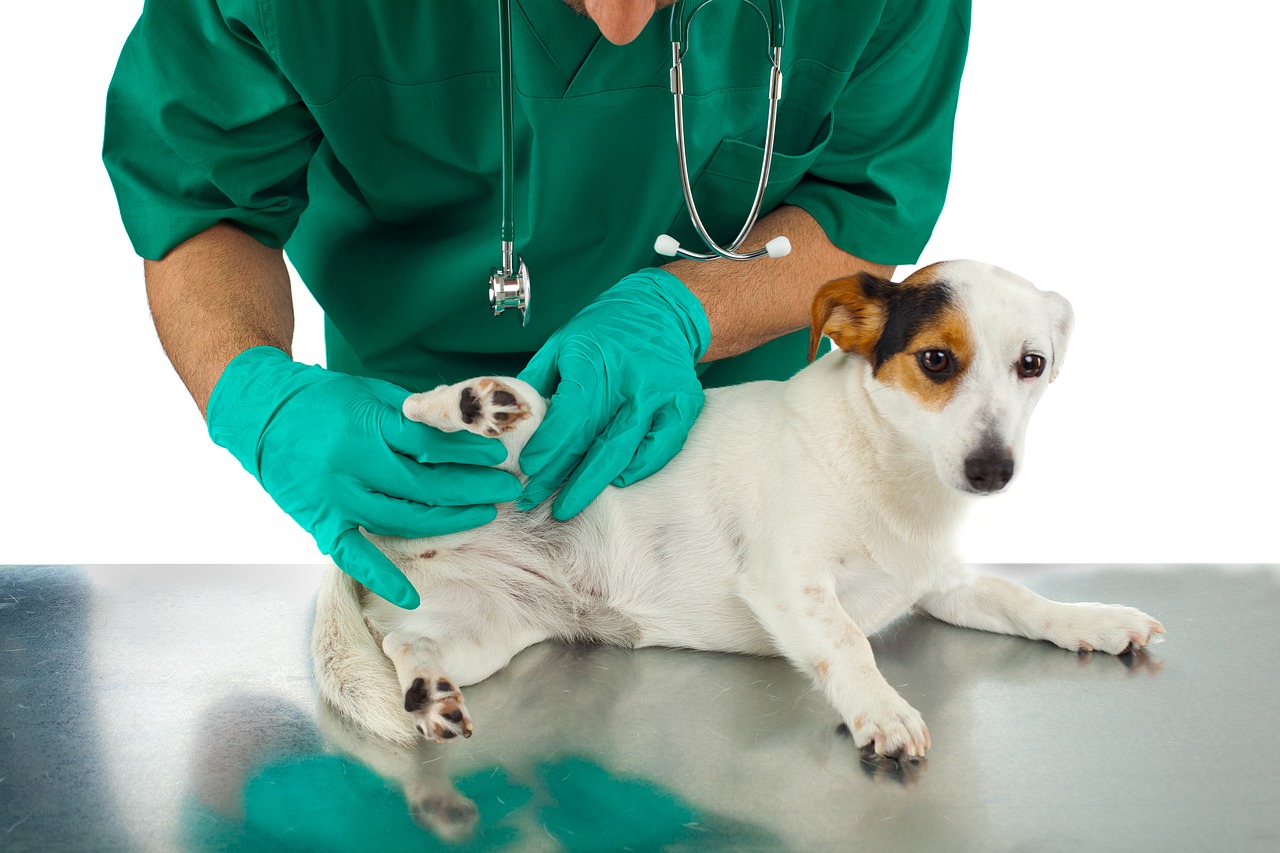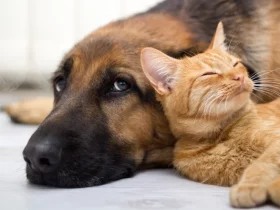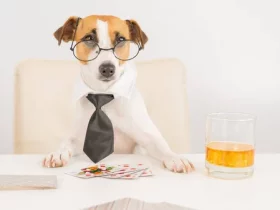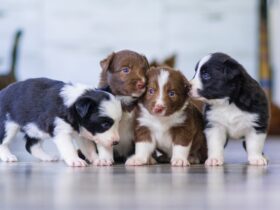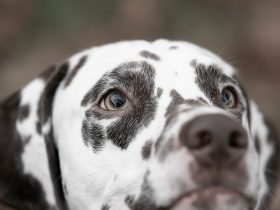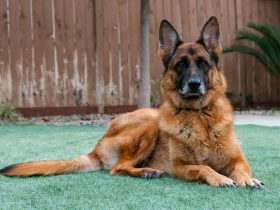Let’s try to form an image of the world as your dog views it. Since some of our senses are not as highly developed as those of the dog, we’ll have to be satisfied with an approximation.
Smell
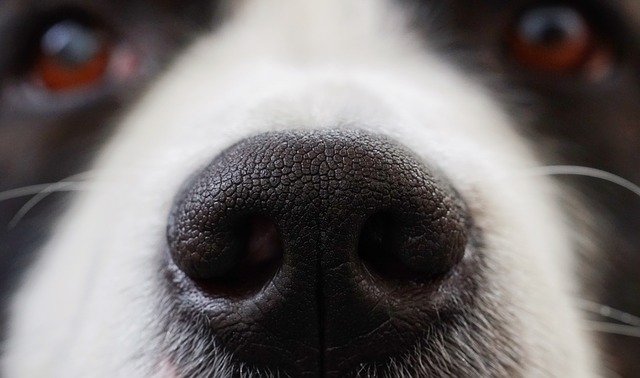
First of all, your dog lives in a world of smells. His nose is an intricate organ, telling him many things about people, animals and objects. He can detect hundreds of odors that are missed by us. No matter where these odors are-in the air, on the ground, on objects, hands or clothing-the dog easily picks them out and sorts them. He has a vast range of smells-all unconsciously classified and available for quick identification.
The Bloodhound, for example, has such a keen sense of smell that he can select one scent from among hundreds in the same area. And he can do this even though the one scent he is searching for is several days old or mixed with many others. Scientists studying the olfactory sense have learned that dogs can detect the difference between natural and artificial musk. Even to a human being with an unusual sense of smell, natural and artificial musk have identical odors.
Your dog’s nose, therefore, is his guide to the identification of people, objects and other animals. Regardless of how many times your dog sees people or animals, he will not accept them until he puts his nose to work. Then-and only then-will he be satisfied.
But for the dog to bring his sense of smell into play, he must be within range. If he is too far away or the wind is blowing away from him, he will be unable to identify a person or animal. There is a classical experiment for this. Put on an old coat and hat. Pull the hat down over your ears and turn up the coat collar. Now get downwind from the dog, so that he cannot pick up your scent. Crawl toward him or approach him in an apelike walk. Watch his reaction. He’ll either bark and run off, or stand still.
If he stands still, he’ll growl and the hairs on the back of his neck will rise. The chances are he’ll assume an attack position: body rigid, tail lowered and teeth bared. Don’t push this experiment too far. When you see that he doesn’t recognize you, straighten up, take off the hat and coat, and call out to him. Then let him approach and sniff you.
Vary the experiment and approach the dog upwind with the same costume and stance, and you’ll get a different reaction. Once he whiffs your scent, he’ll bound toward you with tail-wags and yelps of recognition. No doubt, if he could talk, he’d say, “Come on, take off the disguise. I know you!”
Sight

Most dogs have poor eyesight. There are exceptions, notably the sight hunters or gaze hounds. These gaze hounds, such as the Saluki, Afghan and Greyhound, are lean, speedy dogs that hunt with their eyes fixed on the quarry. They have good vision and are farsighted. But the majority of dogs are near-sighted. The Bloodhound, keen-nosed though he may be, is one of the most myopic of all dogs.
Despite his nearsightedness, your dog will react to motion. In fact, he has a high degree of sensitivity to motion. And this is a main reason why many dogs recoil from a hand that is suddenly thrust at them. The dog’s ability to see motion can be likened to a similar reaction in human beings. We can notice motion that is outside the direct line of vision. We may be looking straight ahead and at the same time notice something moving to the right or left and slightly behind us. We refer to this as seeing something move “out of the corner of our eye.”
While your dog may not be able to identify a person or animal by sight, he can tell in which direction they are moving. That is, he can tell a clockwise or counterclockwise movement. He also has the ability to see at night and a facility known as eyeshine or tapetum lucidum. Eyeshine can be seen at night when your headlights or flashlight are focused on the dog’s eyes. It is caused by the light bouncing off a layer of cells at the back of the dog’s eyes. The facility of eyeshine is also present in some other animals, such as the cat and raccoon. Human beings do not have eyeshine.
When it comes to color vision, your dog has a low score. His color range is limited to black and white, possibly gray. Interestingly enough, dogs do make choices between colors. Or so it seems. They do not select green over red, or blue over yellow.
But if given a choice of three colored toys-one bright red, one dull green and one black-your dog will probably pick the red one. He’ll make this choice because of the difference in brilliance among the three toys. In short, he’ll pick the red toy because it is bright red. But in the final analysis, your dog’s color vision is very weak, and it can become confused when the shape or position of an object is changed or altered.
To sum up, your dog’s eyesight is poor and he has an undeveloped color-vision range. Nature, to compensate for these two weaknesses, has given him a highly developed sense of smell and sound. And in these two senses, your dog has no peer.
Sound
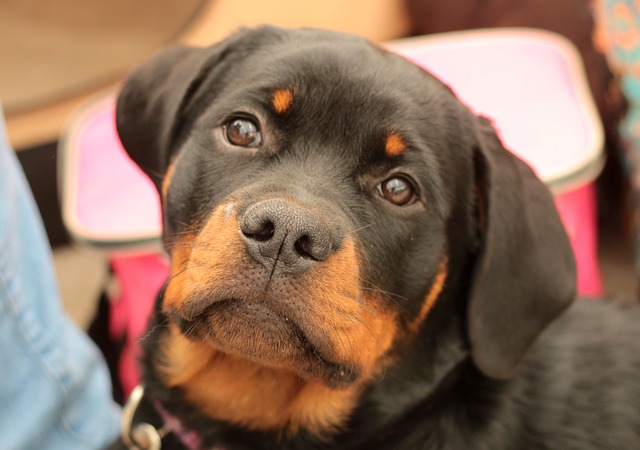
Dogs have exceptionally keen hearing and can pick up sounds too faint for human ears. They can also detect sounds of a higher pitch. The silent dog whistle is designed on the principle of your dog being able to hear the high-pitched sounds. Blow on one of these silent whistles and you hear nothing, except maybe some expelled air. But if the dog is nearby and he’s well trained, he’ll dash over to you in short order.Dogs are very responsive to the human voice. By changing your inflections and tones, you can get a variety of reactions from your dog. An encouraging word will set off a barrage of joyful barks or a series of frenzied tail-wags. Speak harshly to him, and he’ll become depressed, perhaps slinking away or cringing before you. You may have noticed how some dogs back away from a loud or harsh-voiced person. Some dogs may even run off and hide if a voice “hits” them the wrong way.Your voice and how you use it are the most important factors in communicating with your dog.
Remember, it will be the tone, inflection and shading in your voice that will provoke a response, not the words.
But more about this in the chapter on training your dog.
Taste
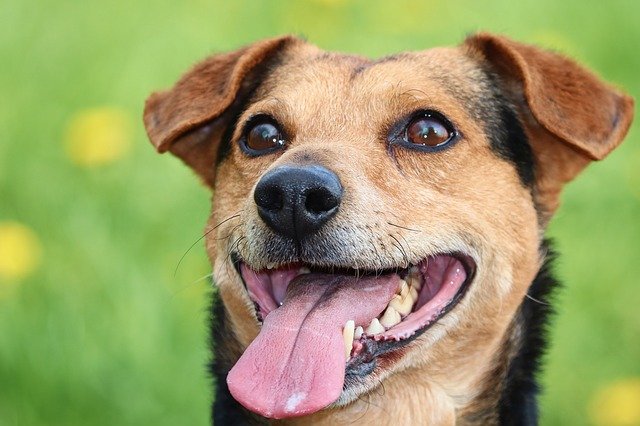
Your dog’s sense of taste is closely related to his sense of smell. What he will not accept with his nose, he’ll rarely, if ever, eat. Some dogs have acquired unusual tastes and will eat foods that border on the exotic. But the majority of dogs have plain tastes and will stick to standard foods.
Touch
What we’re referring to here, of course, is the dog’s degree of sensitivity to being touched.Dogs react in various ways when touched by the human hand. Most dogs don’t mind being petted. In fact, they will almost beam with pleasure while you scratch behind their ears or massage their stomachs. Many of us have met the old house dog that, after he’s sniffed and checked you out as a friend, thrusts his rear end at you to be scratched.But there are dogs that violently object to being touched. This touchy-type dog will quickly let you know that he doesn’t want to be petted. He may cringe, pull back, run off or snap at anyone who tries to pet him.
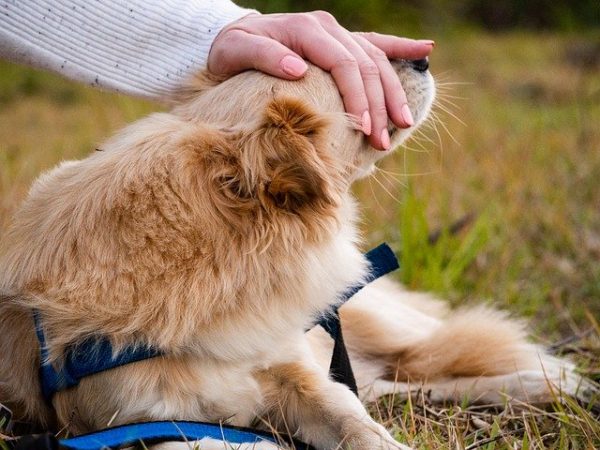
This is especially true when you suddenly thrust your hand at his head.Unfortunately, people get bitten because they either ignore a dog’s objection to being touched or are unaware of it. Many people assume that all dogs like to be petted and just can’t resist stopping to pat every dog they meet. Considering what we’ve just learned about the dog’s poor eyesight, need to identify everything with his nose, and a possible objection to being touched-we can understand why some dogs snap at people.A dog’s objection to being touched may be an inherited or acquired trait. Genetics, environment and state of health all have a bearing on the dog’s degree of sensitivity to being touched. But regardless of the cause, you and others will have to respect the dog’s dislike of being petted.
Protective instinct
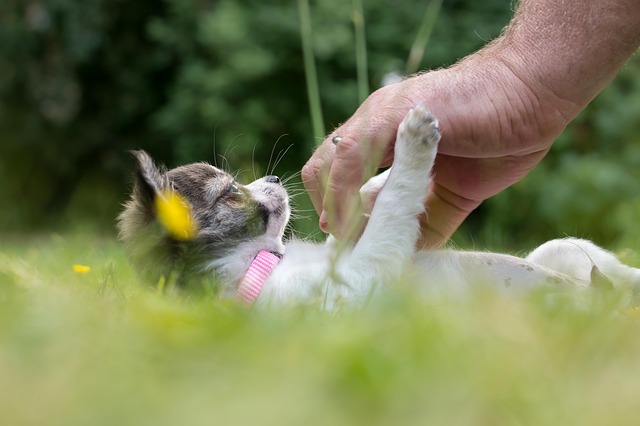
Most dogs have an innate sense of protection for the people with whom they live. This protective sense is stronger in some dogs than others. But once your dog gets accustomed to the house and occupants, he will assume a guardianship over the household. He will bark a warning, possibly launch an attack when danger threatens his charges. Now, he may not be able to do this with the dash and skill of Rin-Tin-Tin or Lassie, but his concern is genuine. He will, if necessary, risk bodily harm or death to protect you.Your dog will also show an instinct to guard property. This is a deep-rooted instinct that is dominant in the wild, as well as domestic, dogs. Wolves and coyotes carefully stake out property lines and defend them against all aggressors, canine and otherwise. They do this by urinating on trees, rocks and bushes around the perimeter of their domain.
The domestic male dog’s habit of lifting his leg and urinating against trees, poles and fireplugs is a remnant of this powerful instinct. But your dog doesn’t have to “stake a property claim.” Your home is well defined-fences, shrubbery and so forth-and the dog gets to know the boundaries. And once he is familiar with the property, he will defend it. (Even though this “defense” consists of barking shrilly from the safety of the porch or house!)Individual dogs with a strong protective instinct and a tendency toward over-aggressiveness, are trained as guard dogs. But there is a big difference between the average watchdog and guard dog. The guard dog is taught to be hostile to everyone except his master, and is always a potential hazard. Such a dog is not for the average person.
Intelligence
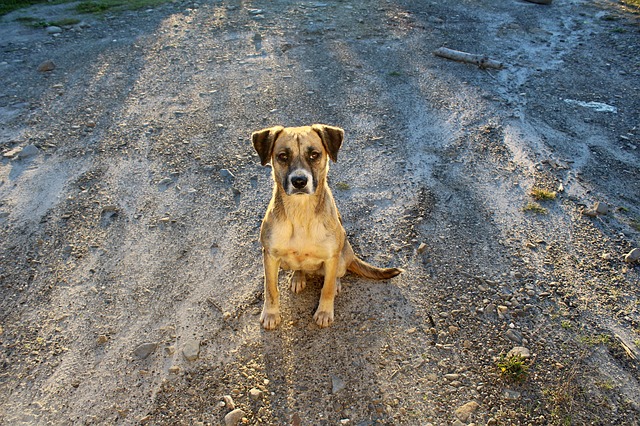
Finally, we come to the matter of intelligence in the dog. Much has been written about how smart or dumb dogs are when faced with various psychological tests. Unquestionably, the dog doesn’t measure up to man or the great apes in intelligence. He does rank high above most of the other animals below the primates.Some dogs are more intelligent than others. Similarly, certain breeds have a higher intelligence quotient. The German Shepherd Dog and Collie, for example, are two breeds with high I.Q.s. For practical purposes, your dog’s I.Q. should be based on two factors: 1) his readiness to learn and 2) the degree to which he remembers and uses what he learns. There’s no point in hoping for a dog whose intelligence matches that of a highly inventive chimpanzee.

